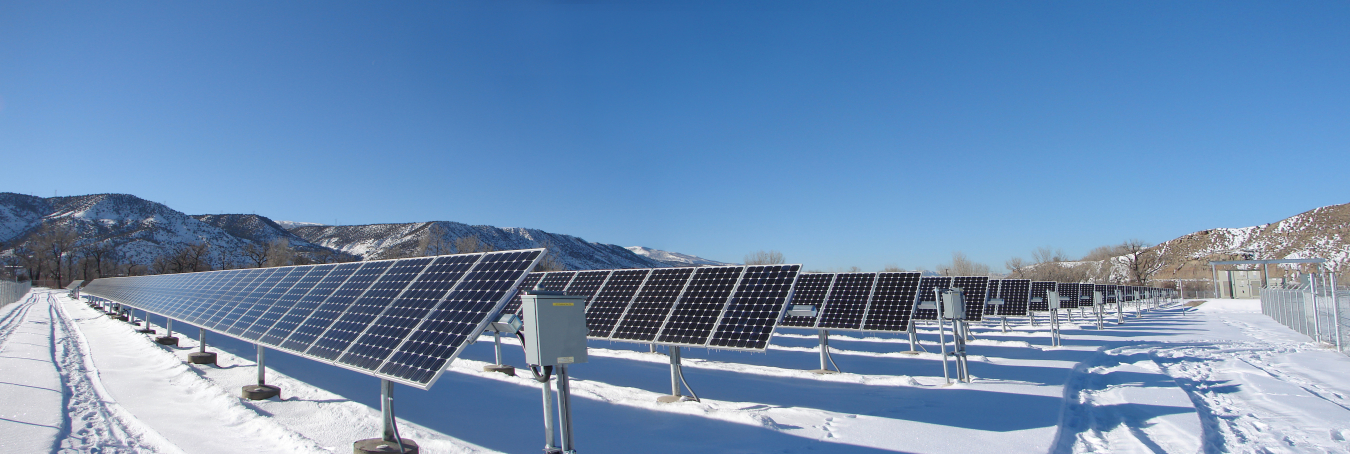Construction will begin in June 2021 on a new 2 MW solar array.
May 11, 2021In the heart of western Colorado’s oil and gas fields, the city of Rifle, Colorado, has also become a leader in municipal solar power production.
Construction will begin in June 2021 on a new 2 MW solar array on a former uranium processing site. The new array will join two existing arrays (totaling 3.7 MW), which were constructed at the site between 2008 and 2010 to power the city’s wastewater treatment plant and other municipal facilities, while also providing energy to residential subscribers.
City officials expect construction on the new solar array will wrap up by September 2021.
“The city of Rifle has made solar energy a priority since 2008, when the city installed the existing solar facility on the site to power the adjacent Rifle Wastewater Facility,” said Patrick Waller, the planning director for the city of Rifle. “We’re glad that we’ve been able to work with the DOE [U.S. Department of Energy Office] and the CDPHE [Colorado Department of Public Health and Environment] to continue to use the site for productive uses, like solar, that benefit the citizens of Rifle.”

The city of Rifle, Colorado, is using a series of solar panel arrays constructed on a former uranium processing mill to power city facilities as well as provide energy for many of the city’s 9,650 residents. (Credit: Patrick Waller, planning director for the city of Rifle)
The New Rifle mill, which was owned and operated by Union Carbide Corporation, processed uranium for the U.S. Atomic Energy Commission from 1958 to 1970. The mill continued producing vanadium concentrates for the commercial market until 1984. Milling operations resulted in site contamination with radioactive tailings and groundwater contamination from arsenic, molybdenum, nitrate, selenium, uranium and vanadium.
The state of Colorado purchased the 137-acre site, while DOE performed the cleanup of surface and groundwater contamination under the Uranium Mill Tailings Radiation Control Act of 1978. DOE completed encapsulation of radioactive materials in disposal cells in October 1996, while treatment of groundwater contamination continues through use of passive remediation.
While the state of Colorado transferred ownership of the site to the city of Rifle in 2004, the DOE Office of Legacy Management (LM) maintains institutional controls and monitors the site to prevent disturbance of any contaminants that may remain underground. Institutional controls are typically legal controls, such as easements, restrictive covenants, and zoning ordinance, that help minimize the potential for human exposure to contamination. The materials handling plan for the site requires the city to monitor the excavated material for potential radiological contamination and either return the material to the area from which it came, or dispose of the material at a licensed disposal facility, such as the Grand Junction, Colorado, disposal site.
“We just want to ensure the construction process follows the materials handling plan,” said LM Site Manager Mark Kautsky, “and if contaminated materials are unearthed during construction, they are handled properly and safely.”
The city of Rifle began construction of a new wastewater reclamation facility on the site in 2008, including installation of a 1.72 MW solar system, at the time designed to provide 60% of the power needed to operate the facility. On a nearby site, another solar system provides 100% of the power needed to pump drinking water from the Colorado River for residents, making that pumping facility “net- zero.” A net-zero facility is one which generates as much power as it uses, greatly reduces operational costs and is environmentally friendly.
While LM does not own the site and is not providing funding for the project, LM’s risk-based review of the city’s plans ensures that the project complies with institutional controls and does not pose a health risk to the community or the environment based on potential disturbance of the site.
Kautsky said he is excited to see the site come full circle, from uranium production, through cleanup, to renewable energy production.
“We are excited about how the city of Rifle is using the property, because it aligns with our broader mission of supporting energy production,” Kautsky said. “And to take an old uranium processing site, on which contaminants were remediated, and turn that into a solar farm, which generates power for the city — that’s a huge win for the community.”

